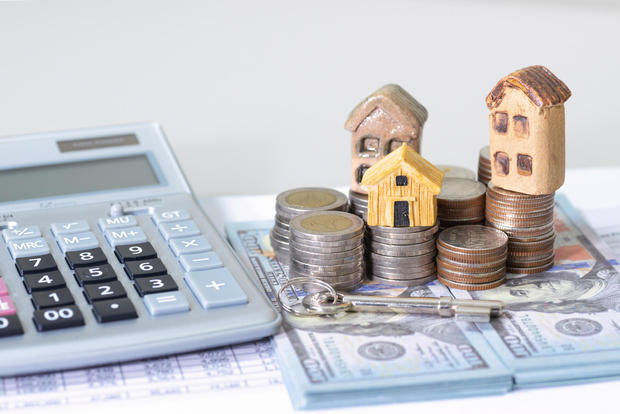How to tap into home equity on a paid-off house
Homeowners have seen a remarkable surge in home equity over the past several years. In turn, the average homeowner now has about $299,000 in home equity, with about $200,000 of that being readily accessible to borrowers. This spike in home equity is largely attributed to mortgage rates dropping to sub-3% levels during the COVID-19 pandemic, which increased demand for homes and fueled a home inventory shortage, driving home values upward.
For homeowners who have fully paid off their mortgages, this accumulated equity represents a significant untapped financial resource. After all, home values are still high compared to what they were just a few years ago, so chances are that you have a significant amount of home equity to borrow against if your home is paid off.
And, there are several compelling options for leveraging the equity in your paid-off property. But if you're not sure where to start, it helps to know a few home equity borrowing options to consider.
Explore your best home equity options online now.
How to tap into home equity on a paid-off house
If your home is paid off and you want to want to tap the equity, the following home equity borrowing options may be worth a look:
A home equity loan
One of the most straightforward ways for owners of paid-off homes to access their equity is through a home equity loan. Home equity loans provide a lump sum of cash upfront, which you then repay in fixed monthly installments over a set loan term, often five to 30 years.
Because home equity loans offer a lump sum of money to borrowers, they can be an attractive option for homeowners who need a significant amount of capital for a specific purpose, such as a home renovation or debt consolidation. And, since there is no existing mortgage, you can typically borrow between 80% and 90% of your home's current market value — giving you access to a hefty amount of equity to utilize.
Another big advantage of opting for a home equity loan is that these types of loans typically offer relatively low interest rates compared to personal loans or credit cards. This is because the loan is secured by the equity in your home, which lenders view as a lower-risk proposition. And, the interest paid on a home equity loan may be tax-deductible, which could reduce the overall cost of borrowing.
Compare the best home equity loan rates available to you here.
A home equity line of credit
Another home equity borrowing choice worth considering if your home is paid off is a home equity line of credit (HELOC). Similar to a home equity loan, a HELOC allows you to borrow against the equity in your home, and you can typically access between 80% to 90% of the home's value, though the maximum borrowing limits depend on the lender.
The big difference is that a HELOC is a revolving line of credit that functions more like a credit card, giving you access to a credit line that you can draw from as needed. And, unlike home equity loans, HELOC interest rates are variable, meaning that they can increase or decrease over time, depending on the overall rate environment.
The key benefit of a HELOC is its flexibility. You only pay interest on the amount you actually borrow rather than paying interest on a lump sum of money. This can make a HELOC a more cost-effective option for homeowners who anticipate needing access to their equity over time.
HELOCs can be particularly useful for covering unexpected expenses or funding a series of smaller home improvement projects. And, like home equity loan rates, HELOC rates are generally a lot lower than what you can get with another lending option, so if your home is paid off and you want to tap into your equity, a HELOC can be an attractive option.
A reverse mortgage
Reverse mortgages are a unique borrowing option designed specifically for homeowners aged 62 and older. These types of loans allow you to access a portion of your home's equity without having to make monthly payments. Instead, the loan is repaid when you die, sell the home or move out for an extended period.
The main benefit of a reverse mortgage is that it can provide a stream of retirement income, making this type of home equity loan a valuable tool if you want to supplement your savings. And, reverse mortgages may be particularly appealing if you've paid off your home but have limited liquid assets or retirement income, as this type of loan lets you boost your cash flow and maintain your standard of living in retirement.
However, it's important to carefully consider the potential drawbacks of opting for a reverse mortgage. For starters, these loans can come with upfront costs, including origination fees and closing costs, which can add up quickly. And, there are other risks, like inadvertently jeopardizing eligibility for need-based government benefits like Medicaid or Supplemental Security Income (SSI). In turn, reverse mortgages should be thoroughly evaluated in the context of your overall financial plan and long-term goals.
The bottom line
For homeowners who have fully paid off their mortgages, the sizable equity built up in their properties represents a valuable financial resource. Whether you need funds for a home renovation, debt consolidation or retirement income, the options outlined above can be compelling ways to tap into that equity. Before you make a decision, though, be sure to carefully evaluate the pros and cons of each approach to make the best decision for your unique circumstances.




